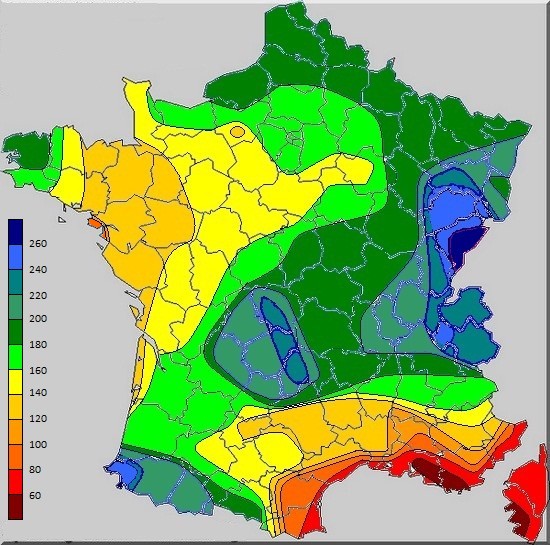
Hello,
We’ve now come to the end of this questionnaire, which will help you determine what is and isn’t feasible for your future landscaping.
The challenges of the coming century: water and water management are crucial for your garden!
Do you really know how much water your garden of Eden needs and how much it receives annually to be lush?
Depending on the region, precipitation levels vary considerably from season to season. This means that mountainous regions never run out of water, whereas the rest of France does. You’ll need to anticipate these environmental parameters if you want to create a garden that’s easy to maintain.
Are you interested in ecological and economical gardening? (Water harvesting, positive plant associations, attracting wildlife, composting …): yes / no
If your answer is yes, then we’re going to give you a few keys to help you make your garden easy to live in.
Water can be scarce or abundant, depending on the garden. What do you have?
spring, well, agricultural irrigation canal, mains water………
Did you know that, on average over 1 year, it rains more on the Mediterranean rim than on the Ile de France, even though the number of sunny days is also much higher?
Indeed, many regions have high winter rainfall but little useful summer rainfall (which penetrates deep enough into the soil to benefit plants). But it’s in summer, when temperatures are hottest, that our beloved plants need it. So we’re forced to water and spend money unnecessarily, whereas with a rainwater or grey water recovery system we can quickly and effortlessly make substantial savings.
Here’s a map of average summer precipitation over the last 20 years, showing the wide national disparity.

To visualize precipitation over the months, here is a very well done animation by http://la.climatologie.free.fr/inondation/precipitation-france-anime.gif
What type of garden would you like?
water-rich garden,
water-efficient garden,
very water-efficient garden
idea: water recovery from roofs, kitchen…
To estimate your water recovery needs: http: //www.pluvionature.fr/base-de-calcul.html
Manual or automatic watering
How many watering points are available around the house to connect an automatic sprinkler system?
How often would you like to water in summer: …once a week.
If, unfortunately, you live in an area with low summer rainfall and don’t want to install an automatic watering system, here’s a simple rule to make life easier: group plants according to their water requirements and proximity to water sources. Let me explain: since it’s easier to water around the watering point than on the opposite side of your exterior, I recommend planting in concentric spaces with the watering point at the center. In the proximal part of the watering point, put plants that need very frequent watering in summer (e.g. hydrangea…), then the further away you are from this point, the more you put less demanding plants at the top, so that in the part of the garden/terrace furthest away from the watering point, you put drought-tolerant plants (e.g. lavender, rosemary…) that will need almost no watering. With this ecological landscaping approach, you’ll save water and time spent on watering, and can even create different atmospheres for your outdoor décor (wetlands and ponds near the water feature, and Mediterranean areas on the opposite side). If you have several water points spread around your home (e.g. gutter water collection tanks, taps in the garden), you can multiply these zones as many times as you like.
